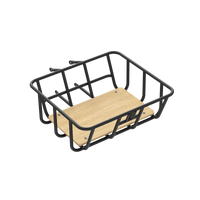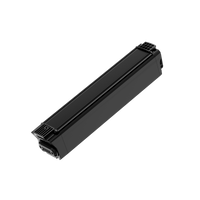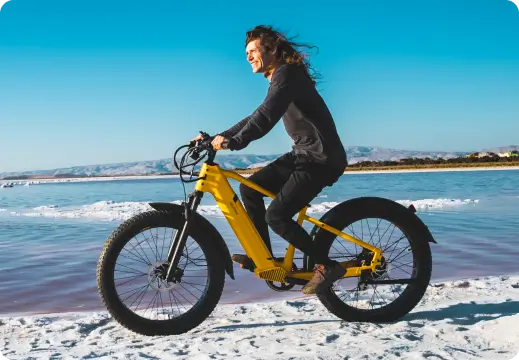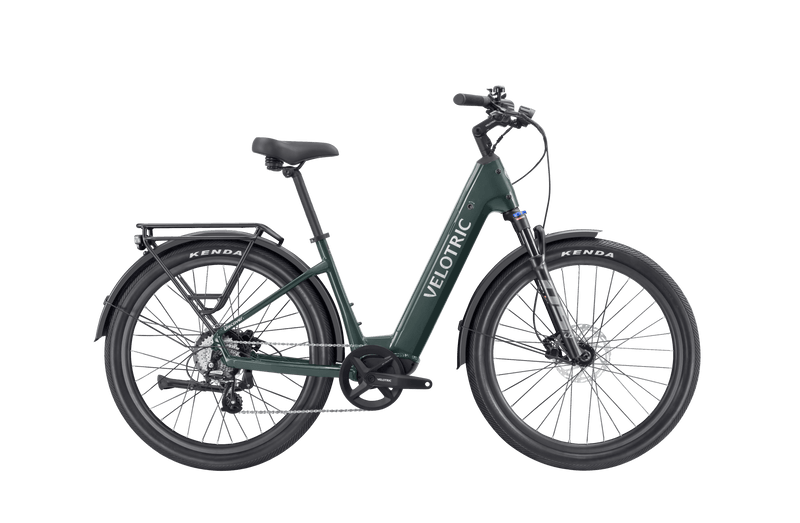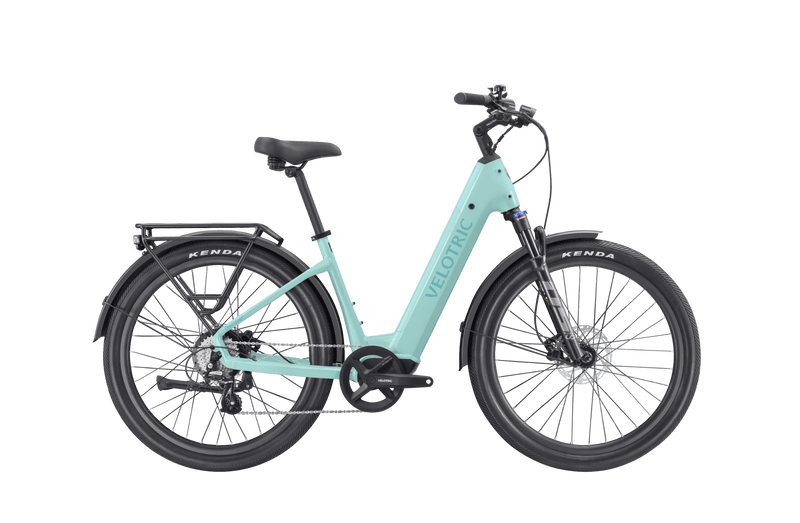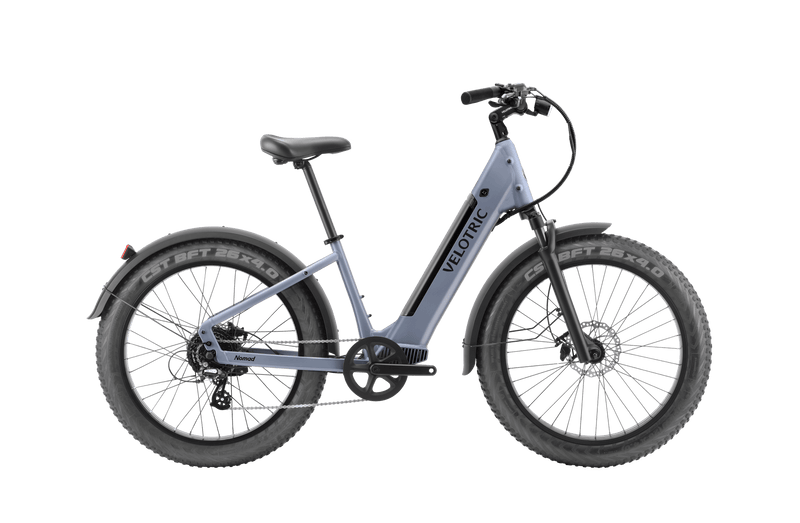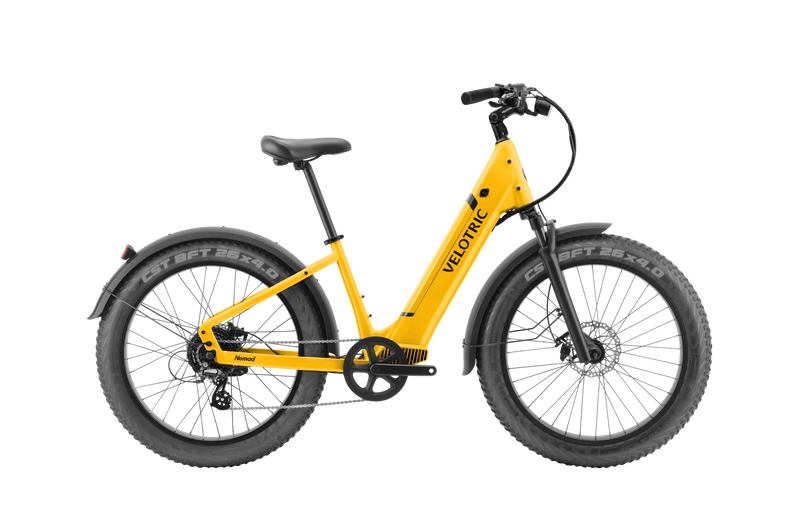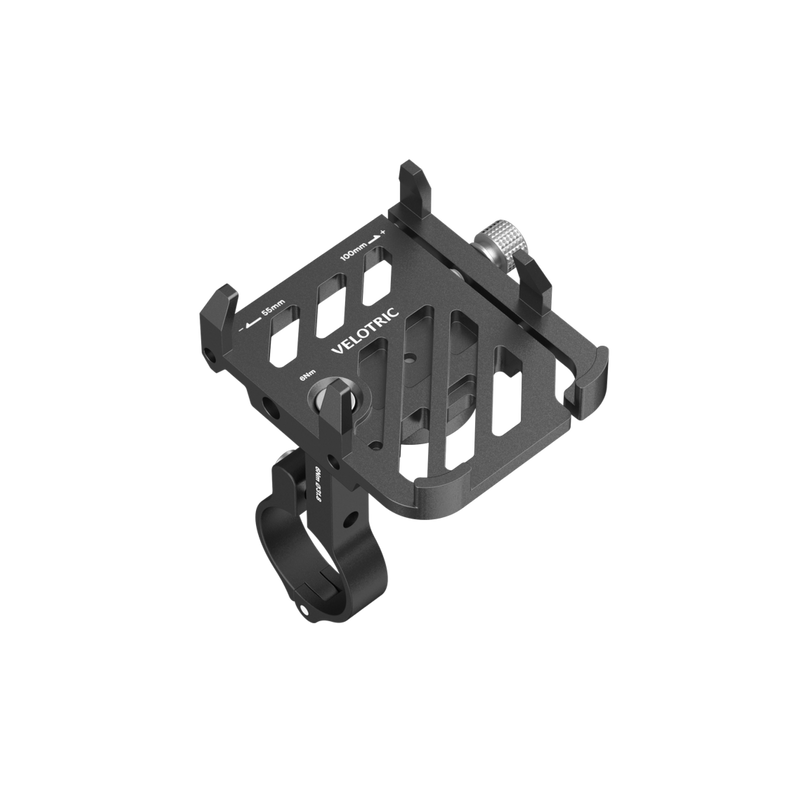Whether you’re on your way to work or looking for some exercise in the sunshine, e-bikes are a great, eco-friendly option.
E-bikes are gaining popularity among those looking for transportation, exercise, and recreation due to their safety, efficiency, and ease of use.
For those who’ve only ever ridden a conventional bike, riding an e-bike for the first time may seem daunting — but it’s actually relatively simple and quite fun. We’ve created this beginner’s guide to riding an e-bike so you can get out and enjoy the journey.
Understanding e-bikes
An electric bike, or e-bike, is a bicycle with an electric motor that gets its power from a rechargeable battery. The motor assists the rider, and the level of assistance you get is controlled by pedal assist. The higher your pedal assistance level, the more help you get from the motor.
E-bikes have different levels of pedal assist. For example, the Velotric Discover 1 and Nomad 1 have five-level pedal assist.
There are many kinds of e-bikes available to buy, and they’re classified into three main categories:
- Class 1 e-bikes. Known as a pedelec, a Class 1 e-bike only moves forward when you’re pedaling. It has pedal assist but no throttle assist and can only go 20 miles per hour (mph). Class 1 e-bikes are often allowed on bike paths and bike lanes.
- Class 2 e-bikes. Class 2 e-bikes have pedal and throttle assist, allowing the rider to move forward without pedaling. They can also go no faster than 20 mph and are still mostly allowed on traditional bike paths and lanes.
- Class 3 e-bikes. Class 3 e-bikes reach speeds as fast as 28 mph and have a speedometer and pedal assist. Class 3 e-bikes can go on roads but aren’t usually permitted on bike lanes, paths, or trails.
Important e-bike features and components
Its battery-powered electric motor makes an electric bike different from a conventional bike. Different types of e-bike motors depend on the style of e-bike.
E-bike tires can differ depending on what you need them for, and the main classes of tires are road, commuting, BMX, fat, hybrid, and mountain.
Another important component of your bike is your seat. It’s important to find a seat that’s comfortable for you. The best way to choose the right seat for your e-bike is to know the main purpose of your e-bike. In addition, you’ll want to adjust the seat’s height so that you fit properly. Check out our guide about e-bike seats.
Your e-bike would be nothing without the frame, as it brings together all the other components of the bike. The two main types of e-bike frames are high-step bike frames and step-through bike frames. Learn more about the types of frames and which one is best for you.
Want to know more? Check out our comprehensive guide to e-bike components.
Safety first
Like any other transportation mode, riding an e-bike involves ensuring you’re wearing the appropriate clothing and safety gear.
No matter when you’re cycling, you should wear the following safety equipment:
- Bike helmet. In case of an accident, a helmet protects your head, skull, brain, and face, and many states have introduced laws mandating helmets.
- Visibility vest. A visibility vest is made of reflective material that allows cars, other cyclists, and pedestrians to see you easily. The vest is worn over your clothing and can help reduce the risk of an accident.
- Protective glasses. Protective glasses protect your eyes against wind and other weather while keeping dirt, dust, bugs, and debris out of your eyes — allowing you to cycle with clear vision.
- Cycling gloves. Cycling gloves protect the hands and make gripping the handlebars easier, which helps e-bike riders maneuver the bike better.
- Reflectors, lights, and mirrors. Like with a standard bike, equipping your e-bike with reflectors, lights, and mirrors makes it easier for you to see your surroundings and for others to see you.
Pro safety tip: When dressing for a bike ride, you should always wear long-sleeve clothing that is flexible, ensuring mobility. Wear proper shoes to protect your feet, and dress for the season and conditions you’re biking in.
Defensive riding tips
Whether it’s your first ride or you’re a pro on the city streets, practicing defensive riding is important to avoid accidents. Here are some ways you can ride defensively:
- Always indicate. Use hand signals to let cars and other cyclists know what direction you’re turning. Look as you approach, make your indication, and then look one more time to check nothing has changed.
- Give yourself space. Make sure to leave enough space between you and the curb so that you can maneuver when needed. Try to keep at least 3 feet between you and the curb at all times. Be extra careful around cars, especially when a vehicle is turning.
- Obey traffic signs and signals. It’s important to follow the rules of the road, including going the speed limit, especially when on an e-bike.
- Brake earlier. Since e-bikes have more power than traditional bikes, it’s important to slow down earlier than you would on a slower-moving bike. Make sure to reduce speed well ahead of stop signs and traffic signals. Every e-bike’s braking power differs depending on its manufacturer, so familiarize yourself with your specific bike’s braking pattern.
- Ride in low-assist mode when possible. Riding in low-assist mode ensures you have more speed control, allowing you to make decisions more quickly.
E-bike riding techniques
Riding an e-bike may feel different initially, but it’s very easy to get used to. Once you learn a few things, like proper riding position and how to use the pedal assist and throttle, you’ll be good to go.
Safely starting and stopping
Starting and stopping on an e-bike is similar to a regular bike — you just need to consider the motor. Starting is as simple as pedaling the bike, but you can go faster with pedal assist or throttle.
To stop, you use your e-bike brakes, but since the bike goes faster than a traditional bike, you want to make sure you’re braking more gradually and sooner than with a traditional bike.
Using throttle and pedal assist
A pedal assist system (PAS) engages and provides support when you’re pedaling. To use it, just enable PAS based on your bike manufacturer’s settings and start pedaling.
Throttle assist engages the motor even when you aren’t pedaling, powering the bike forward independently. The throttle assist is located by the handlebar, and to use it on a Velotric e-bike, simply flip the thumb-controlled switch. Check your e-bike’s manufacturer settings to learn how to activate throttle assist on your bike.
Proper riding position
When riding an electric bike compared to a traditional bike, there are some things to take into consideration. An electric bike weighs more than a traditional bike, which means its center of gravity is lower. This means you want to avoid standing up, leaning, or turning excessively, as it will make you less stable and have less control.
Navigating different terrain
When you ride an electric bike, it’s important to know the terrain and the weather conditions where you are riding. This will make sure you’re as prepared as possible — which will keep you safe while riding.
Weather will be a factor when you ride, as conditions can change depending on if it’s sunny, raining, or snowing. Make sure you use caution when riding in poor weather conditions, and ensure you have lights and are wearing a helmet.
Your electric bike has a gear system, which helps you adjust to different terrains. Not all gears are alike. For instance, the gear for a flat, paved road won’t be the same as for a hill. The different gears make pedaling easier or harder depending on the assist level.
As a quick rule of thumb:
- Lower gears. Better for inclines
- Middle gears. Best for everyday cruising
- Higher gears. Great for accelerating, descending inclines, and flat surfaces
To shift gears, you should take into account a few things:
- Shift before you stop.
- Be careful when shifting gears while pedaling.
- Shift one gear at a time.
- Use the right gear for the terrain.
Learn more about gears and how to use them with our guide.
Maintenance and upkeep
Maintaining your e-bike doesn’t take too much time, but staying consistent with the upkeep can help ensure your e-bike will last a long time.
Always check your tire pressure, and make sure your e-bike’s tires are well inflated. In addition, your e-bike’s battery should be fully charged before you head out for a ride, which you can do by taking the battery and putting it on its charger.
Regular maintenance on your e-bike is important, including greasing the bearings, inspecting the brake pads and wheels, checking the bike chain, and more. Check out our detailed maintenance checklist.
It’s also important to store your e-bike in a cool, dry place when not riding. This can keep your bike from rusting and allow it to last a long time.
Common e-bike riding FAQ
Do you still have some questions about e-bikes? We’re here to help you feel as confident on your new e-bike as possible.
Is riding an e-bike different from riding a traditional bike?
Riding an electric bike is different from riding a normal bike because an e-bike allows you to ride farther and more often. The motor-powered bike gives you the option to have pedal assist and throttle assist, which makes biking easier and faster.
What’s the difference between the throttle and pedal assist systems?
The main difference between throttle and pedal assist is that throttle powers the bike forward even when you aren’t pedaling, whereas pedal assist moves the bike forward while pedaling.
Pedal assist, powered by the motor, helps you pedal with less effort. The higher your pedal assist is, the more help you get pedaling.
The throttle assist is by the handlebar and directly powers the motor, which allows the e-bike to reach maximum speeds. On Velotric’s e-bikes, a thumb-controlled switch activates the throttle assist. Since throttle assist requires more motor and battery power, engaging it reduces the bike’s range.
Where can you ride an e-bike?
You can ride electric bicycles in most places you’d ride a regular bike. In addition to riding an e-bike to commute in the city or on the road, you can take it on trails, which is a great way to get some exercise and see new places!
There are trails all over the U.S., and we’ve compiled a list of some of the best.
Find quality e-bike options from Velotric
Riding an e-bike is an easy, fun, and eco-friendly option for getting around — and it’s simple and safe, especially if you follow this guide!
When looking to buy an electric bike, look no further than Velotric. We’ve tested our electric bicycle frames more than 150,000 times, and our batteries are certified by Underwriters Laboratories (UL2271), a global safety standards organization. Additionally, the Discover 1 Step-Thru is already UL 2849 certified while the Discover 1 and Nomad 1 are currently undergoing the same certification. We also offer an industry-leading one-year warranty so that you can ride with peace of mind on some of the best electric bikes.
Our bikes all come with 7-speed Shimano derailleurs, hydraulic disc brakes, a 48V 14.4Ah battery with cells made by Samsung, and a five-speed pedal assist.
The Velotric Discover 1 is a great commuter bike with a high-performance rear hub motor (500W rated, 900W peak) and a 65Nm torque. It gives you a smooth and easy riding experience even when scaling inclines up to 15 degrees.
Meanwhile, the Nomad 1 is made for rougher terrain, featuring specialized fat tires and a rear hub motor with a 750W rating. It also has a suspension fork with lockout for added comfort.
Find a Velotric dealer near you and see the difference that riding an e-bike can make!























